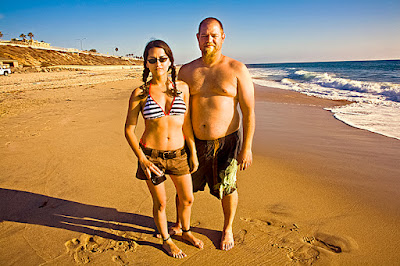 |
| © roger minick 1978-1979 |
During the spring and fall of 1978 and 1979, I made a series of photographs of undocumented field
workers on a 300 acre ranch near Oceanside, CA. The crops being grown on the gently rolling
farmland were strawberries and tomatoes. Approximately 100-200 men worked six and a half
days a week, and as was typical for the times, housing was not provided––the men were instead
forced to find shelter under tin roofs and plastic coverings in the nearby side canyons.
workers on a 300 acre ranch near Oceanside, CA. The crops being grown on the gently rolling
farmland were strawberries and tomatoes. Approximately 100-200 men worked six and a half
days a week, and as was typical for the times, housing was not provided––the men were instead
forced to find shelter under tin roofs and plastic coverings in the nearby side canyons.
Because of the illegal nature of the operation, the men were strictly forbidden from venturing
into town. Their main contact with the outside world was the lunch wagon which, in addition to
bringing meals for purchase once a day, provided orders for basic necessities, cashed
paychecks, and delivered letters to the post office––all for a fee.
into town. Their main contact with the outside world was the lunch wagon which, in addition to
bringing meals for purchase once a day, provided orders for basic necessities, cashed
paychecks, and delivered letters to the post office––all for a fee.
I knew that for my series to have any chance of success, I had to convince the men that I
was not from the INS, that I was merely there to make a series of interesting photographs of
their work experience north of the border. Although I did not speak Spanish, I soon discovered
that handing out free SX-70 polaroids to the men as I followed them around with my two
35mm Leicaflex cameras more than compensated for my language deficit and any lingering
fear they still had that I was from the border patrol.
was not from the INS, that I was merely there to make a series of interesting photographs of
their work experience north of the border. Although I did not speak Spanish, I soon discovered
that handing out free SX-70 polaroids to the men as I followed them around with my two
35mm Leicaflex cameras more than compensated for my language deficit and any lingering
fear they still had that I was from the border patrol.
Although the cultivated fields were surrounded by suburbia on all sides, the farming activity
was conveniently hidden from the outside world by eucalyptus trees and the rolling hills. Also,
it soon became apparent to me that the surrounding community had decided that as long as
the workers stayed on the ranch and didn’t come into town, or generally cause trouble, then
their illegal status was acceptable.
was conveniently hidden from the outside world by eucalyptus trees and the rolling hills. Also,
it soon became apparent to me that the surrounding community had decided that as long as
the workers stayed on the ranch and didn’t come into town, or generally cause trouble, then
their illegal status was acceptable.
In the end this experience once again made vivid for me how Americans have always loved
their bountiful standard of living above everything else, and how a hugh component of this
good life is making certain there is always cheap labor available to keep food prices affordable
in super markets and at the same time to keep the profit margin as large as possible for the
corporate farmers and their investors.
their bountiful standard of living above everything else, and how a hugh component of this
good life is making certain there is always cheap labor available to keep food prices affordable
in super markets and at the same time to keep the profit margin as large as possible for the
corporate farmers and their investors.
In a timely essay for a book being planned of these images, entitled UNDOCUMENTED,
photographer farmworker historian Richard Steven Street writes of men who will work ten-hour
days, six to seven days a week, for months, years, at labor that is back-breaking, underpaid,
unappreciated. These are "liminal men", writes Street, men caught between two world––the
one which they have left behind and the one in which they have suddenly found themselves
trying to survive.
photographer farmworker historian Richard Steven Street writes of men who will work ten-hour
days, six to seven days a week, for months, years, at labor that is back-breaking, underpaid,
unappreciated. These are "liminal men", writes Street, men caught between two world––the
one which they have left behind and the one in which they have suddenly found themselves
trying to survive.
NEW BOOK COVER COMING SOON!
© roger minick 2013

















